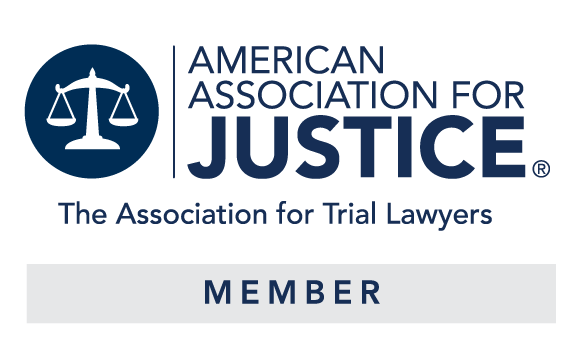Why does lead paint poisoning happen in small children and not adults?
Current federal estimates put the number of children with poisonous levels of lead in their blood at over 300,000. Small children are especially at risk for lead paint poisoning for a three (3) basic reasons. First, because the are smaller, they are close to the ground where they are exposed the the dust and flaking condition. Second, they exhibit a great degree of hand-to-mouth activity (called "PICA") which results in many small and dangerous items going into their mouths. Third, their small brains are at the greatest rate of development before the age of seven (7), and any injury to the brain at that time has the greatest chance of being permanent.
Who is responsible for the lead danger?
There are two (2) separate groups that we have identified that are generally responsible for the dangers posed by lead paint.
The first group is what we generally call the "lead pigment industry." For the majority of the 20th century, a small but dedicated group of companies mined tons of lead "pigment," and then sold that pigment to the paint industry with the purpose of having those paint industry companies use that pigment in paints to be sold for residential purposes. These lead pigment producers knew that lead-based paint would most likely cause lead poisoning in small children. However, they felt confident that the children who would be poisoned would be children from low-income families who would most likely lack the financial resources to bring any legal action against the giant lead pigment industry. Here is some more interesting facts about the lead pigment's liability to children for the presence of lead in paint: Cincinnati Children's Hospital Medical Center.
The second group is what we refer to as absentee ghetto landlords. These people own and/or manage residential real properties that are sub-standard and/or neglected. They generally don't care about the conditions of their properties and feel no need to ever inspect for any dangers at these properties - regardless of whether they are lead-paint hazards or any other hazards. They feel that the folks who rent from them are usually low-income families who will lack the legal resources to hold landlords accountable for their actions or inactions. Most residential real properties that were constructed before 1978 most likely have lead paint on their surfaces. It is very important that these surfaces are monitored and maintained by landlords to make sure that they do not flake or chip or degrade into a condition that will expose people (mostly children) to lead poisoning.
We handle many lead poisoning cases against these types of landlords. See a short list of the cases that we have resolved for families with lead poisoned children by clicking here.
Has your child been exposed to lead?
Contact Us
From Our Blog
What happens and what can be done after a child has been poisoned?
Generally speaking, most parents discover that their child has been poisoned by lead paint only after the child has had to be seen by a doctor and has had blood tests. This is because lead poisoning mostly has no visible signs of injury. There is often no pain or change in physical appearances in the child while the poisoning is occurring or even after the poisoning has occurred. However, some lead poisoning effects can be seen by parents if they are watching, including:
sluggish behavior
apathy
headaches
staring periods
tremors
seizures
loss of consciousness
abdominal cramps
loss of appetite
constipation
irritability
hyperactive behavior
However, the effects of lead paint poisoning are severe and, often, permanent. The poisoned child has to endure a series of blood tests (both by finger-stick and intravenous needle), often has to be hospitalized for intervenous blood treatment, and, unfortunately, often has permanent damage, including:
learning disabilities brain damage (sometimes subtle)
loss of IQ points and intellect
academic failure
neuropsychological deficits
attention deficit disorder
hyperactive behavior
antisocial (criminal) behavior
neurological problems
encephalopathy (brain swelling)
major organ failure
coma
death
The first thing that a parent needs to do after a child has been poisoned by lead paint is to make sure that they follow-up on the treatment recommendations of the treating doctor. The doctor will need to make sure that the child's blood lead levels are closely monitored to make sure that they go down and continue to stay down. A very small number of untrained doctors may not seem concerned about the lead poisoning issue, and may not order any treatment. If this should happen, the parent or parents should immediately seek a second opinion from a doctor that treats many lead-poisoned children. The Centers for Disease Control and Prevention (CDC) recommends testing every child at 12 months of age, and if resources allow, at 24 months. Screening should start at 6 months if the child is at risk of lead exposure (for example, if the child lives in an older home built before 1978 which has peeling or chipping paint). Decisions about further testing should be based on previous blood-lead test results, and the child's risk of lead exposure
The other thing that a parent needs to do is seek legal guidance. The parents should understand all of the legal rights that they may have against the party or parties that caused the lead paint injury. Many times the injuries to these children are permanent, and the parents of these children will need significant financial resources to address these permanent injuries. Our law office has handled many lead poisoning cases, including cases brought against the lead pigment industry and cases against landlords. Anyone with a child that has been poisoned by lead should strongly consider calling our toll free legal action hotline of 800-LAW-1966 or fill out the form below and we will get back to you right away. We know what questions to ask and have the financial resources to bring a claim for a child's lead injury.
See a short list of some of lead cases that we have been able to resolve for Ohio families by clicking here.
Cases of Interest
What Happened: Ohio family children poisoned by lead paint. What We Did: Obtained a settlement of over $180,000.00.
What Happened: Second Ohio family children poisoned by lead paint. What We Did: Obtained a settlement of over $175,000.00.
What Happened: Third Ohio family children poisoned by lead paint. What We Did: Obtained a settlement of over $100,000.00.
What Happened: Fourth Ohio family children poisoned by lead paint. What We Did: Obtained a settlement of over $70,000.00.
Other Resources
There are a number of federal laws which address lead paint poisoning, including the Residential Lead-Based Paint Hazard Reduction Act of 1992 (Title X).
The E.P.A. link below includes resources that parents can read in order to learn more about the dangers of lead paint poisoning in the home, including:
Lead in Your Home: A Parent's Reference Guide
Protect Your Family from Lead in Your Home
Testing Your Home for Lead
Preventing Lead Poisoning in Young Children
There are also various agencies that try to assist in the elimination of lead poisoning in children, including: Alliance for Healthy Homes HUD's Office of Healthy Homes and Lead Hazard Control Ohio Department of Health - Childhood Lead Poisoning Prevention Program Environmental Health Watch - Cleveland







